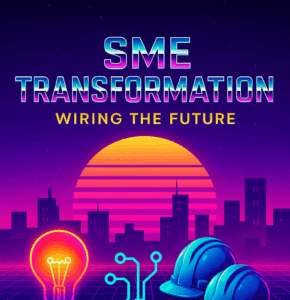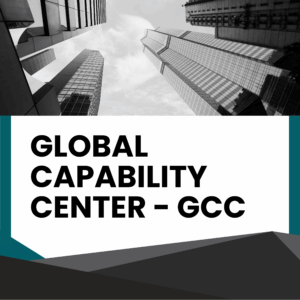KMU Transformation Standardisieren. Automatisieren. Skalieren. In der Deutschschweiz begleitet Mandelz...
Written by : Miro Mandelz
Posted on : January 13, 2023
EMPLOYEE EXPERIENCE
Gain better insights into the concerns of your employees!
Picture from Armand Khoury on Unsplash
Employee experience refers to the overall perception and feelings that an employee has about their job, their organization, and their work environment. It encompasses all aspects of the employee’s work life, including the physical environment, the culture, the management style, and the opportunities for growth and development. In this article, we’ll explore the importance of employee experience and how it can be improved.
There are many reasons why employee experience is important. Research has shown that employees who have a positive experience at work are more engaged, more productive, and more likely to stay with their organization. They are also more likely to have a positive impact on customer satisfaction and loyalty. On the other hand, employees who have a negative experience at work are more likely to be disengaged, less productive, and more likely to leave.
In its State of the Global Workplace report, Gallup concludes that 20% of employees are engaged at work. Gallup reports that since it started reporting employee engagement, the highest percentage of engaged employees it has recorded in the US is 36%, in 2021. According to data collected by Kincentric from its clients from the second half of 2019 to the first quarter of 2020, the highest employee engagement levels are in Latin America, at 74%. The Harvard Business Review Analytic Services surveyed more than 500 business executives, and 71% of the respondents ranked the employee engagement as very important to achieving overall business success. This implies, that businesses that have engaged employees are likely to have a competitive advantage. They are also more profitable.
So, how can organizations improve employee experience and engagement? There are many factors that contribute to employee experience, and what works for one organization may not work for another. However, there are a few general strategies that can be effective:
- Focus on the physical work environment. A comfortable and well-designed work environment can have a big impact on employee experience. This includes things like lighting, temperature, ergonomics, and access to natural light and outdoor space.
- Foster a positive company culture. Culture is the shared values, beliefs, and behaviors that define an organization. A positive culture that values diversity, inclusion, and collaboration can improve employee experience and engagement.
- Provide opportunities for growth and development. Employees want to feel like they are learning and growing in their careers. By providing opportunities for training and development, organizations can improve employee experience and retention.
- Foster open and effective communication. Employees want to feel like their voice is heard and that their ideas are valued. By fostering open and effective communication, organizations can improve employee experience and engagement.
Improving employee experience is a complex and ongoing process, but it is worth the effort. By focusing on the physical work environment, culture, growth and development opportunities, and communication, organizations can create a positive employee experience and thus a much higher employee engagement that benefits all key stakeholder the employees, the customers and the organization as a whole.
Employee engagement results in employees who are more committed to their jobs, will do their best even when the manager is not watching, and are willing to go the extra mile. This is why “Kruse” proposes that engaged employees lead to better business outcomes.
The positive results of high employee engagement are supported by results from several other studies and surveys from reputable organizations, such as the Harvard Business Review and the American analytics and advisory company Gallup.

Picture from Digital Markting Switzerland
To feel the pulse of their company culture, more and more companies are conducting regular employee surveys. They hope to gain a better understanding of the employee experience in the company. But what employees answer and what they really believe and, above all, what they do are two different things.
Traditional questionnaires do not really provide an answer to employees’ real concerns. They only register the employee’s answer but are not able to assess to what extent the employee is convinced of his or her answer. The risk to which companies are exposed by drawing wrong conclusions and thus, not being able to identify the real concerns is considerable. Measures taken may further prove to be ineffective and, in addition to the immense costs incurred, there is a considerable risk that they will have a negative rather than a positive impact, turning the measures into an expensive adventure.

© by Silverbush AG (Appreci8)
Systems 1 and System 2 — Daniel Kahneman (Alfred Nobel Memorial Prize in Economic Sciences [1]; Nobel Laureate 2002 [2])
According to Kahneman, humans have two systems for making decisions: System 1 and System 2. In System 1 we decide automatically, which according to Harvard Professor G. Zaltman [3] happens in over 95% of cases. Our beliefs in the subconscious drive these actions without the rationale intervening. In very few exceptions (<5% of cases) we use System 2, which involves analytical thinking to make decisions. The rationale is the place where the cognitive process takes place in thinking.
Fortunately, today there is a better way! Science (Nobel Prize winners Daniel Kahneman [4] and Richard Thaler [5]) agrees that the subconscious takes the lead in over 95% of our decisions. Our beliefs, habits and convictions play in this an essential role. We do not need in-depth thought processes; we take the so-called gut decisions intuitively and thus very quickly. When performing employee surveys, this fact can be crucial. If the question is answered quickly, the stronger the conviction; if the answer is given hesitantly, the greater the doubt.
With Response Time Testing (RTT) based surveys we can measure the speed and thus the conviction of the answers. This gives you a deeper insight into the convictions of your employees. This insight is decisive and offers a massive competitive advantage! We thus have a way to measure the true feelings of the employees, which are driving their behaviour and actions. This allows you to gain meaningful insight into your corporate culture, as this is shaped by the behaviour and actions of your employees and not by their thinking, or the spoken or written word.

© by Silverbush AG (Appreci8)
Using an example based on following employee survey question: “I have the authority to make most of the decisions that have impact on my work?”, we see that when we measure with Response Time Testing (RTT), we get two, respectively four pieces of information. On the one hand, whether he answered the question with “YES” or “NO” and on the other hand, how high the conviction of the answer is. Thanks to this extended interpretation, it becomes clear that a “yes” does not equal a “yes” and a “no” does not equal a “no”.

© by Silverbush AG (Appreci8)
When analysing the responses, the measured speed of the response is crucial for the correct interpretation. And thus, also for the elaboration of the measures to improve the current situation in terms of employee experience. A valuable insight that is not possible with traditional survey techniques. An insight, however, that may be crucial for improving corporate culture and thus employee engagement and company success.
According to a Gallup study from 2022 [6], only 21% of employees are engaged globally, and in Switzerland even only 11%. The fact that employee engagement has a high influence on productivity has already been proven in many studies. As such this situation is very worrying.
If you would like to learn more about this approach, you can download the flyer “The Employee Experience Explorer” using the following link https://mandelz.com/case-studie/, or contact us via email contact@mandelz.com.

Picture from Tim Mossholder on Unsplash
DATACENTER LOGISTIK
Intelligente Logistik. Intelligente Daten. Wie intelligente Baustellenlogistik das modernste Datenzentrum...
CAPABILITY AS A SERVICE
Capability-as-a-Service (CaaS) für den Mittelstand Ein Praxisleitfaden, um echte Delivery-Skalierung...
BURNOUT EXPLORER
Entfesseln Sie das Potenzial Ihres Teams mit dem Burnout Explorer....





